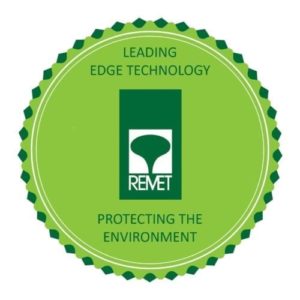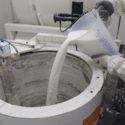Investment Casting Hygiene: Its a Bugs Life!: Part 2
Termination Day
This post is the much awaited follow up to my post a few months ago with respect to the presence of bacteria and yeasts in alkaline colloidal silicas, which you can read here. I did plan on writing this follow up immediately after the first post, but life sometimes gets in the way. So, sorry for the delay and here it is:
REMET Manufactures colloidal silica binders under the REMASOL and ADBOND trademarks. Whilst these products are formulated to be bacteria free at point of manufacture, various storage, handling and application conditions can promote bacterial growth. All grades contain a universal biocide and preservative selected for its efficacy and compatibility.
There are conditions under which the preservative can be overwhelmed. As soon as the container is opened high quantities or resistant strains can be introduced. High storage temperatures also limit the effectiveness of the biocide.
This post provides some information on bacterial control.
Topics covered are
- Sanitisation and sterility levels
- Prevention
- Preservatives
- Quick Kill Biocides
- Bacteria and Chemical Testing
- Equipment Maintenance
Sanitisation and Sterility Levels:
Sanitising chemicals, equipment and processes aim to reduce or eliminate bacteria and other micro-organisms. Achieving total sterility involves costly chemical and engineering controls that are out of the reach of many industrial processes. Even if the product and equipment are initially sterile, organisms may be introduced after a short time in an industrial setting. Users must determine the acceptable bacterial load and establish the controls necessary to achieve a stable environment.
Prevention:
- When Possible the best approach to infection is prevention:
- Containers should be kept tightly closed except when dispensing or using.
- Sampling cups/ tubes, measuring sticks, piping and hosing should be cleaned regularly. Ideally, they should be sanitised.
- Production vessels should have lids and be closed when non-operational
- Air vents should be directed away from open vessels and open floor drains near open vessels should be covered or redirected if this is consistent with safe practice.
- Storage tanks and piping should be regularly sanitises and thoroughly rinsed out with clean water. This should be done at least annually, but more often if required.
Sanitisation: Caution!
If these preventative methods fail, and the colloidal silica becomes contaminated, it can be sterilised with various biocides. However the suggestions listed below should be approached with caution. It always better to remove the source if possible. Excessive levels of an additive can destabilise the colloidal silica may cause gelling or otherwise affect performance, so use only the minimum quantity to do the job. New biocides should be tested offline, just in case.
Preservatives.
Many organic biocides are longer lived than inorganic materials SUCH AS SODIUM HYPOCHLORITE. Selecting an appropriate biocide is important, pH or other formulatory components may render them unstable, or just inactive. Some consideration should be given the toxicity of the biocide, and all of their manufacturers literature should be reviewed and understood to ensure appropriateness and safety.
Remet recommends: Dowicil 200 or REMET BF3000
As stated above, a new biocide should be qualified on a small scale. Indications of incompatibility include viscosity increase, precipitation or gelling. If this occurs the method of addition, concentration of addition, or the biocide itself needs to be changed.
Some biocides contain inorganic salts or other stabilising components that may cause incompatibility. In this case they should be diluted to keep the interfering component at <1% of the weight of binder.
If a test solution results in instability, try a 10% solution before addition. Strong mixing should be used to ensure even dispersion and reduce the risk of localised gelling.
These biocides may colour the colloidal silica slightly. Such colour changes do not usually indicate instability and do not pose a problem.
Most Organic biocides are slow acting, typically one should test for bacterial activity 24 – 72 hrs after dosing.
“Quick Kill”
Inorganic biocides such as Hydrogen Peroxide and Sodium Hypochlorite may be used to perform a “quick kill”. This is often done to lower the bacterial level to a point such that preservatives can become effective.
These biocides degrade very quickly and will usually drop to ineffective levels after 1 – 2 weeks
These chemicals are strong oxidisers and users should take all precautions for their safe use.
This is very important! Sodium Hypochlorite should never be added to formulations containing ammonia, or ammonia stabilised sols. This will result in toxic gas evolution. Read this paragraph again if you have any doubt as to how dangerous this practice can be,
Hydrogen Peroxide may be preferred over sodium Hypochlorite in some instances because it contains no metal ions and it degrades to oxygen and water which causes no stability issue.
It is especially useful in applications sensitive to low levels of sodium, chlorine and water. Hydrogen peroxide (2 – 3%) can generally be added without dilution. A dose to make 100 ppm by weight of binder is generally adequate, with good mixing, although more may be added as necessary.
Care should be taken in applications with closed containers. Oxygen evolution may increase internal pressure to the point that the container may bulge or rupture. Monitoring of peroxide level can be done with test strips available from chemical suppliers.
Household Bleach (Typically 5.25% sodium hypochlorite) may be added successfully to most grades, except those containing ammonia). The following precautions need to be observed:
One part of bleach should be diluted with 3 parts of water before adding to the binder. Colloidal silica can be gelled by high sodium ion concentrations.
Strong agitation should be used when adding the bleach. Without agitation, the bleach solution may pool on the top and cause local gelation.
Although multiple doses may be added to binder, sodium ion build-up may destabilise it. Maximum total dose would typically be <300ppm.
Bacteria and Chemical Testing:
Bacterial slides of the “Total Count” type have been found to be a useful and accurate method of determining total count. Care should be taken to employ good practice to avoid contamination.
Remet recommends:
- Easicult TTC or Combi, Orion Diagnostica
- Difco Hycheck, Becton Dickinson Total Count
- Total Count Dipslides, BDH / Fischer
Bleach levels can be determined using chlorine paper test strips similar to pH Paper:
Remet recommends:
- Micro Chlorine Tester CM-240, MicroEssential laboratory inc.
- Aquachek Yellow or Select, Environmental Test Systems inc.
Hydrogen Peroxide levels can also be monitored with paper test strips.
Remet recommends:
- EM Quant Peroxide Test Strips, EM Science.
Most organic biocides will need sophisticated laboratory analysis. Individual manufacturers should be contacted for analytical information.
Equipment Maintenance
Any piece of equipment in contact with binder should be considered a potential source of bacterial contamination. This includes storage and process tanks, pipes pumps filters etc. It also includes measuring devices such as sticks, cups, stirrers, probes etc. These should be cleaned frequently.
Equipment maintenance should include regular cleanout and sanitization procedures.
If required a generic clean down procedure is available from Remet.
So thats the brief outline on maintenance and industrial hygiene. I hope you find it useful and enjoyed it!
Usual disclaimers:
SAFETY PRECAUTIONS: Read MSDS before using this product.
NOTE: Unless specifically identified as a specification value, the above chemical, physical and particle size distribution values are typical properties. They are not specification values.
Contact your nearest REMET Sales Office regarding product specifications.
Contact your REMET Territory Manager and visit www.remet.com if you have any questions or require additional information.
Information and/or recommendations based on research and technical data believed to be reliable. Offered free of charge for use by persons with technical skills, at their own discretion and risk, without guarantee of accuracy REMET makes no warranties, express or implied, and assumes no liability as to the use of its products or of any information pertaining thereto. Nothing herein is intended as a recommendation to infringe any patent.
< Back to insights



